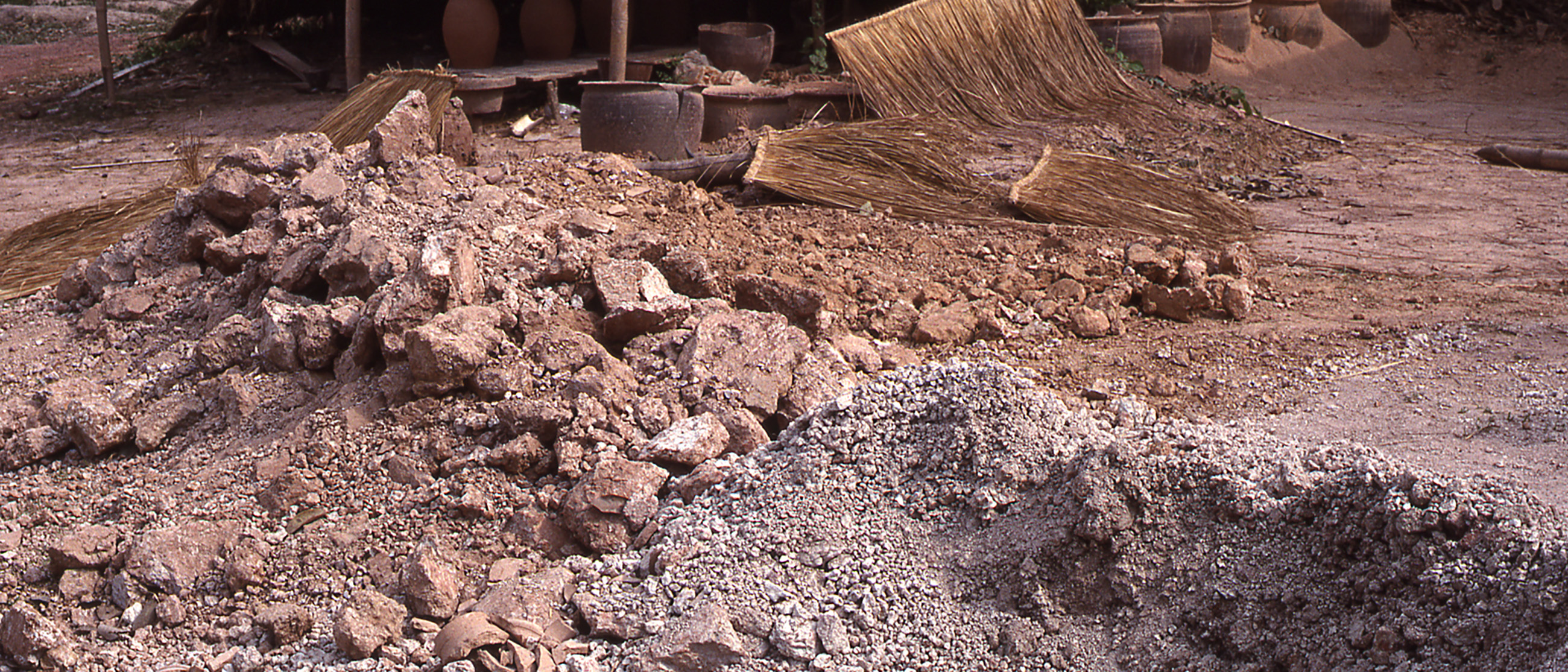Clays
Potters make ceramic vessels by choosing, shaping, and firing clay. Depending on the properties of the clay, the potter’s modifications to it, and the temperature at which it is fired, the resulting wares can possess varying characteristics relating to appearance and usefulness.
Earthenware and stoneware, with their distinctive clays and traits, form the two halves of the ceramic whole. Potters first fabricated earthenware in Mainland Southeast Asia more than eight thousand years ago. Stoneware was first made in northern Vietnam (using technology introduced from China) two thousand years ago, and later centers of stoneware production probably combined imported technology with local innovations. These two basic ceramic types complement one another, and together they provide a wide range of useful containers and other objects. Mainland Southeast Asia is the only region of the world where both ceramic traditions still continue in production for use in everyday life.
The classification of ceramics into “earthenware,” “stoneware,” and “porcelain” follows modern Euro-American industrial usage. In much of Asia, including Mainland Southeast Asian villages today, a pragmatic distinction is made between “soft” ceramics (porous) and “hard” ceramics (nonporous). That distinction informs usage in this catalogue of the terms “earthenware” and “stoneware.”
“Earthenware” is fired at a relatively low temperature (600–1000°C). Afterward, it is still porous, which makes it useful for cooking (it can be heated over an open fire without cracking) and for cooling drinking water through evaporation. Potters usually add sand, rice husks, or fired and pulverized clay to enhance these qualities essential to earthenware’s usefulness. These modifications also help earthenware pots survive the shock of firing in an open bonfire through a rapid process that may take less than an hour. Some potters in Burma (Myanmar) and Thailand used or still use updraft kilns—a cylindrical or square open-topped chamber in which the heat is channeled from below the stacked wares and out the top.
“Stoneware” is fired at a higher temperature (1000–1300°C) and becomes dense, hard, and nonporous, making it especially suitable for processing and storing liquids without seepage. (The application of high-temperature glaze to stoneware further insures water-tightness.) The durability of stoneware, in addition to its attractiveness when glazed and decorated, has also made these vessels a focus of ceremonial and ritual use. (“Porcelain,” using a white-firing clay body fired to an even higher temperature than stoneware, was not generally made in Mainland Southeast Asia until the modern period.)
Reaching the high temperatures required for firing stoneware requires a kiln, a structure designed to contain and concentrate the heat of the burning wood fuel. Kilns producing stoneware in Mainland Southeast Asia were of the type referred to as crossdraft kilns—so called because the structure channels the flames from the fire (generated in the firebox at the front of the kiln) horizontally through and over the stacks of wares in the ware chamber and out a flue or chimney at the rear. The simplest form of crossdraft kiln is built by excavating the desired form into solid earth (often but not necessarily a riverbank or other natural slope). Such kilns are still built and used today in Laos and Northeast Thailand. A more elaborate form involves constructing the kiln roof over an excavated floor and lower wall, either by plastering clay mixture over a temporary frame or by building with unfired bricks. The kiln may also be constructed entirely above ground using bricks. At crossdraft kilns still operating in Northeast Thailand and Laos, the firing lasts one or two days.

